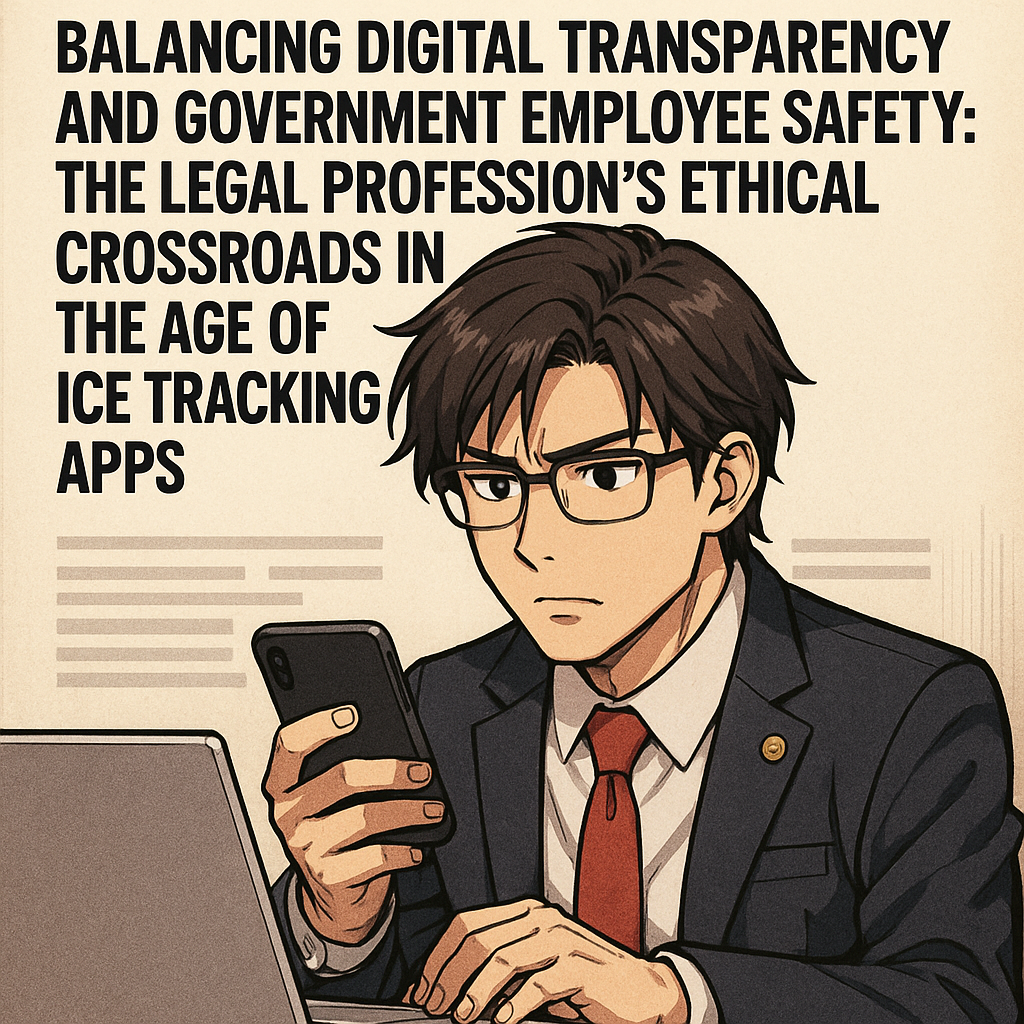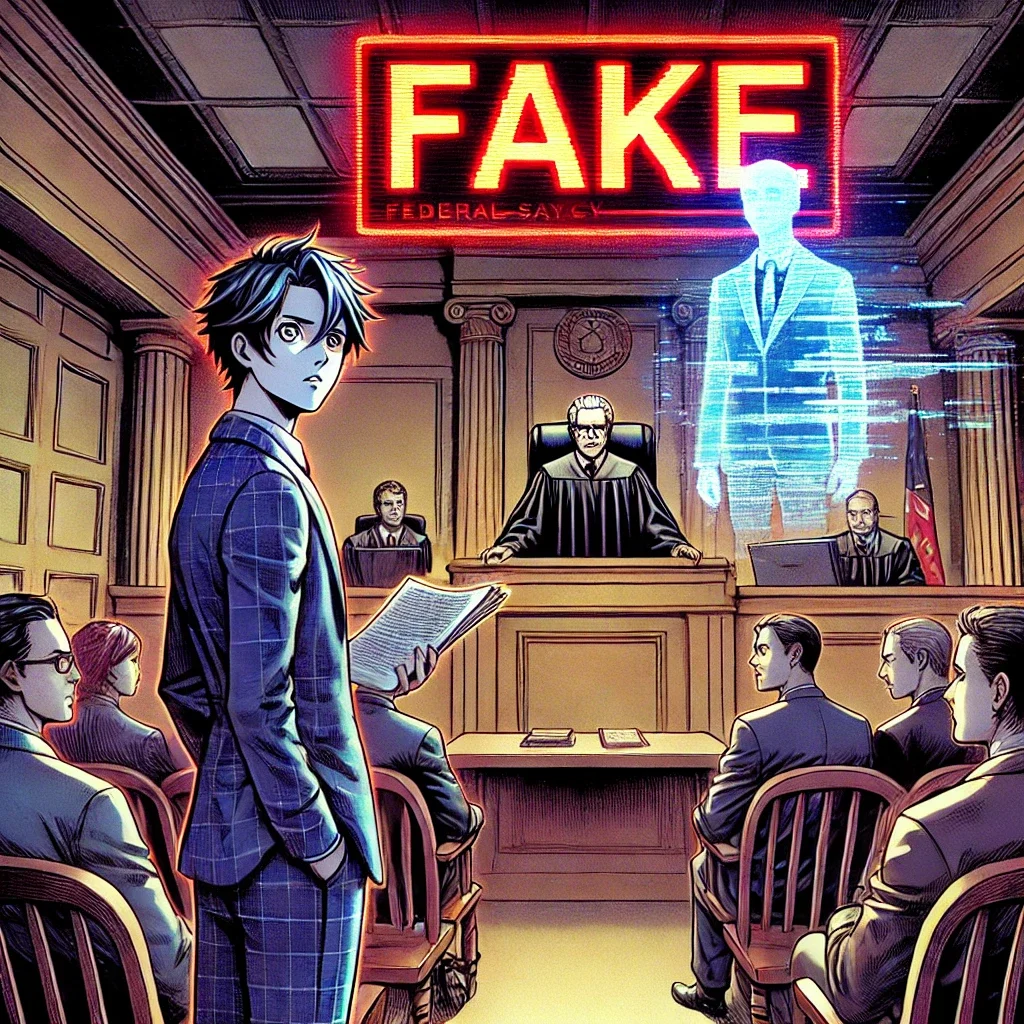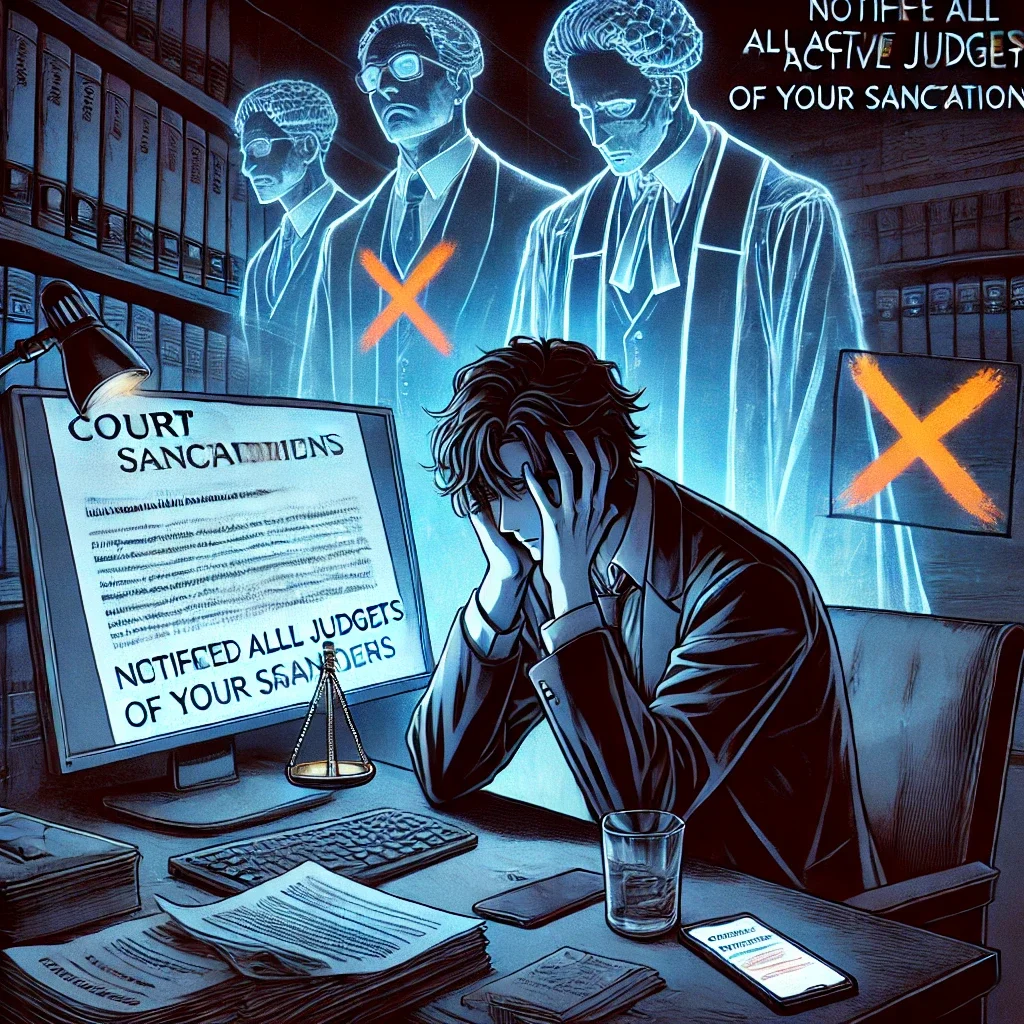MTC: Balancing Digital Transparency and Government Employee Safety: The Legal Profession's Ethical Crossroads in the Age of ICE Tracking Apps
/The balance between government employee saftey and the public’s right to know is always in flux.
The intersection of technology, government transparency, and employee safety has created an unprecedented ethical challenge for the legal profession. Recent developments surrounding ICE tracking applications like ICEBlock, People Over Papers, and similar platforms have thrust lawyers into a complex moral and professional landscape where the traditional principle of "sunlight as the best disinfectant" collides with legitimate security concerns for government employees.
The Technology Landscape: A New Era of Crowdsourced Monitoring
The proliferation of ICE tracking applications represents a significant shift in how citizens monitor government activities. ICEBlock, developed by Joshua Aaron, allows users to anonymously report ICE agent sightings within a five-mile radius, functioning essentially as "Waze for immigration enforcement". People Over Papers, created by TikTok user Celeste, operates as a web-based platform using Padlet technology to crowdsource and verify ICE activity reports with photographs and timestamps. Additional platforms include Islip Forward, which provides real-time push notifications for Suffolk County residents, and Coquí, offering mapping and alert systems for ICE activities.
These applications exist within a broader ecosystem of similar technologies. Traditional platforms like Waze, Google Maps, and Apple Maps have long enabled police speed trap reporting. More controversial surveillance tools include Fog Reveal, which allows law enforcement to track civilian movements using advertising IDs from popular apps. The distinction between citizen-initiated transparency tools and government surveillance technologies highlights the complex ethical terrain lawyers must navigate.
The Ethical Framework: ABA Guidelines and Professional Responsibilities
Legal professionals face multiple competing ethical obligations when addressing these technological developments. ABA Model Rule 1.1 requires lawyers to maintain technological competence, understanding both the benefits and risks associated with relevant technology. This competence requirement extends beyond mere familiarity to encompass the ethical implications of technology use in legal practice.
Rule 1.6's confidentiality obligations create additional complexity when lawyers handle cases involving government employees, ICE agents, or immigration-related matters. The duty to protect client information becomes particularly challenging when technology platforms may compromise attorney-client privilege or expose sensitive personally identifiable information to third parties.
The tension between advocacy responsibilities and ethical obligations becomes acute when lawyers represent clients on different sides of immigration enforcement. Attorneys representing undocumented immigrants may view transparency tools as legitimate safety measures, while those representing government employees may consider the same applications as security threats that endanger their clients.
Balancing Transparency and Safety: The Core Dilemma
Who watches whom? Exploring transparency limits in democracy.
The principle of transparency in government operations serves as a cornerstone of democratic accountability. However, the safety of government employees, including ICE agents, presents legitimate counterbalancing concerns. Federal officials have reported significant increases in assaults against ICE agents, citing these tracking applications as contributing factors.
The challenge for legal professionals lies in advocating for their clients while maintaining ethical standards that protect all parties' legitimate interests. This requires nuanced understanding of both technology capabilities and legal boundaries. Lawyers must recognize that the same transparency tools that may protect their immigrant clients could potentially endanger government employees who are simply performing their lawful duties.
Technology Ethics in Legal Practice: Professional Standards
The legal profession's approach to technology ethics must evolve to address these emerging challenges. Lawyers working with sensitive immigration cases must implement robust cybersecurity measures, understand the privacy implications of various communication platforms, and maintain clear boundaries between personal advocacy and professional obligations.
The ABA's guidance on generative AI and technology use provides relevant frameworks for addressing these issues. Legal professionals must ensure that their technology choices do not inadvertently compromise client confidentiality or create security vulnerabilities that could harm any party to legal proceedings.
Jurisdictional and Regulatory Considerations
The removal of ICEBlock from Apple's App Store and People Over Papers from Padlet demonstrates how private platforms exercise content moderation that can significantly impact government transparency tools. These actions raise important questions about the role of technology companies in mediating between transparency advocates and security concerns.
Legal professionals must understand the complex regulatory environment governing these technologies. Federal agencies like CISA recommend encrypted communications for high-value government targets while acknowledging the importance of government transparency. This creates a nuanced landscape where legitimate security measures must coexist with accountability mechanisms.
Professional Recommendations and Best Practices
Legal practitioners working in this environment should adopt several key practices. First, maintain clear separation between personal political views and professional obligations. Second, implement comprehensive cybersecurity measures that protect all client information regardless of their position in legal proceedings proceedings. Third, stay informed about technological developments and their legal implications through continuing education focused on technology law and ethics.
Lawyers should also engage in transparent communication with clients about the risks and benefits of various technology platforms. This includes obtaining informed consent when using technologies that may impact privacy or security, and maintaining awareness of how different platforms handle data security and user privacy.
The legal profession must also advocate for balanced regulatory approaches that protect both government transparency and employee safety. This may involve supporting legislation that creates appropriate oversight mechanisms while maintaining necessary security protections for government workers.
The Path Forward: Ethical Technology Advocacy
The future of legal practice will require increasingly sophisticated approaches to balancing competing interests in our digital age. Legal professionals must serve as informed advocates who understand both the technological landscape and the ethical obligations that govern their profession. This includes recognizing that technology platforms designed for legitimate transparency purposes can be misused, while also acknowledging that government accountability remains essential to democratic governance.
transparency is a balancing act that all lawyers need to be aware of in their practice!
The legal profession's response to ICE tracking applications and similar technologies will establish important precedents for how lawyers navigate future ethical challenges in our increasingly connected world. By maintaining focus on professional ethical standards while advocating effectively for their clients, legal professionals can help ensure that technological advances serve justice rather than undermining it.
Success in this environment requires lawyers to become technologically literate advocates who understand both the promise and perils of digital transparency tools. Only through this balanced approach can the legal profession effectively serve its clients while maintaining the ethical standards that define professional practice in the digital age.
MTC

























